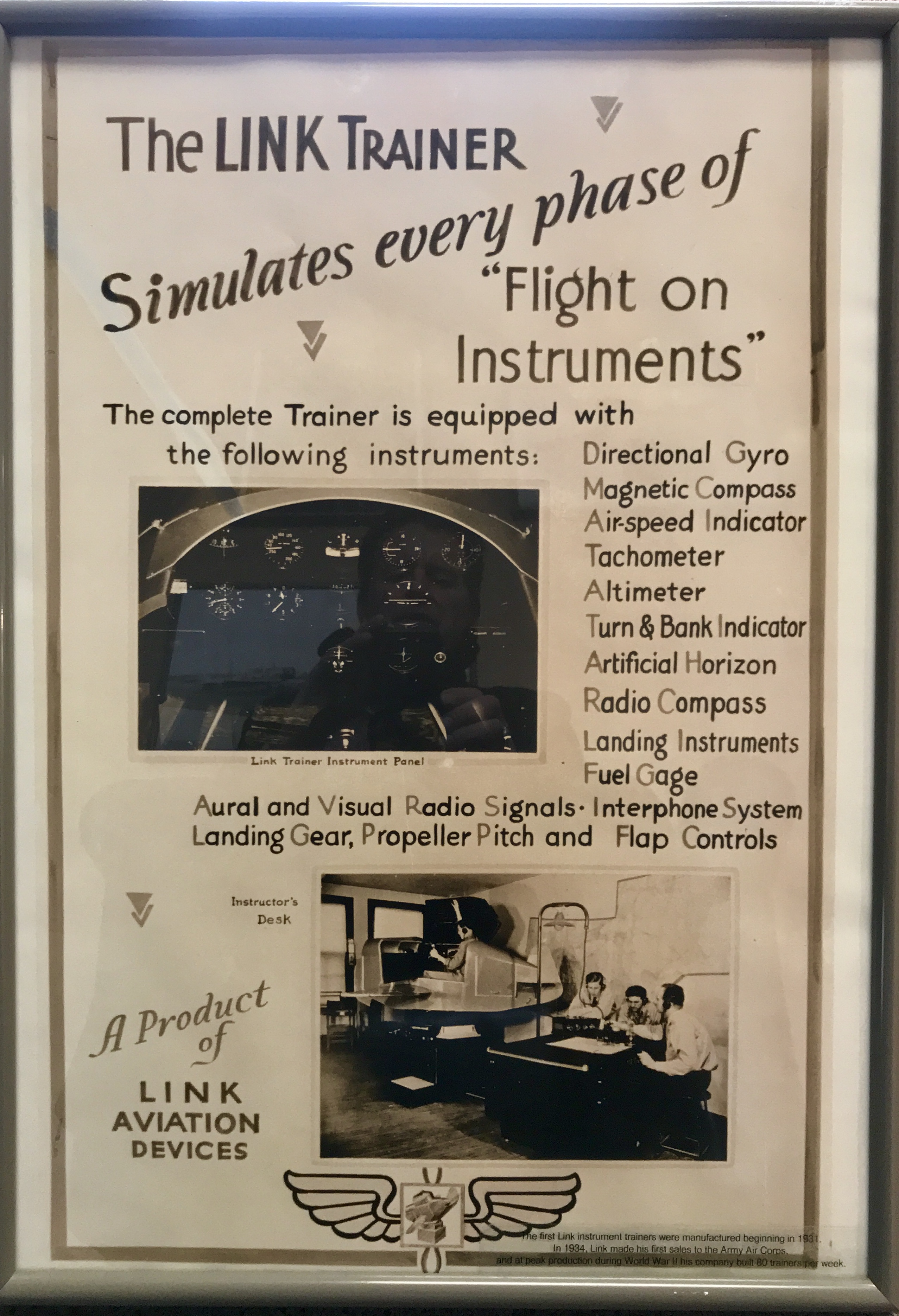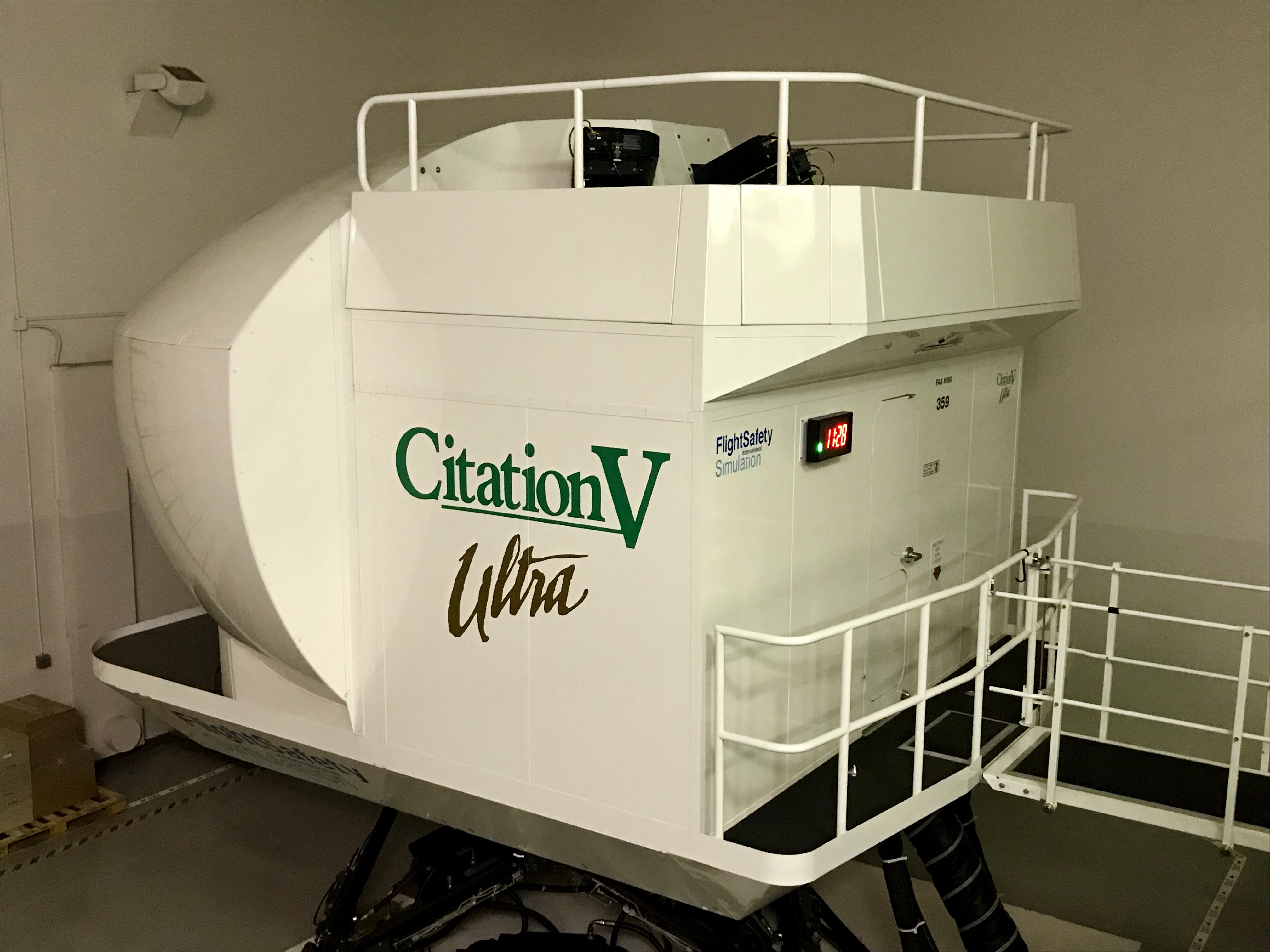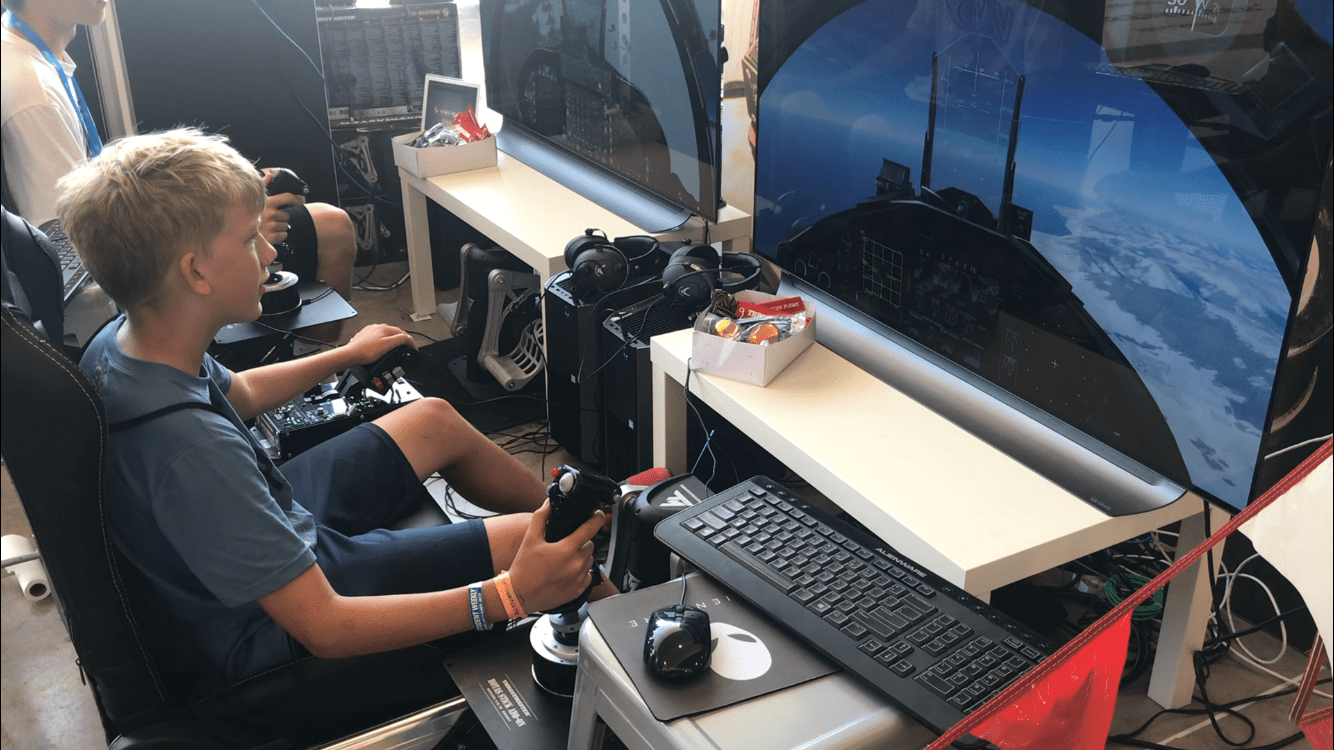 The first effective flight simulator was developed by Edwin Link in Upstate NY in 1927. Prior to this creative device, it was also thought that piloting required inborn skills that training could not supply. In the view of the Wright Brothers, a pilot had to possess superior balance and other physical attributes to ever consider becoming a pilot. The Link Trainer demonstrated that necessary pilot skills could be trained with careful repetition and study to any reasonable adept client. Thousands of pilots were trained for the airmail service and later WWII saving the world from fascist domination. Here is an excerpt from The Talent Code illustrating the imense impact of the original Link Trainer:
The first effective flight simulator was developed by Edwin Link in Upstate NY in 1927. Prior to this creative device, it was also thought that piloting required inborn skills that training could not supply. In the view of the Wright Brothers, a pilot had to possess superior balance and other physical attributes to ever consider becoming a pilot. The Link Trainer demonstrated that necessary pilot skills could be trained with careful repetition and study to any reasonable adept client. Thousands of pilots were trained for the airmail service and later WWII saving the world from fascist domination. Here is an excerpt from The Talent Code illustrating the imense impact of the original Link Trainer:
“Early pilot training was built on the bedrock belief that good pilots are born, not made….The U.S. Patent Office declared Link’s trainer a “novel profitable amusement device.” [and the world ignored this innovation]
In the winter of 1934 President Franklin Roosevelt had a problem. Pilots in the US Army Air Corps–by all accounts the military’s most skilled, combat-ready airmen–were dying in crashes…The carnage was not caused by a war. The pilots were simply trying to fly through winter storms, delivering the U.S. mail… a group of Army Corp brass grew desperate…[and] in one of the first recorded instances of nerd power trumping military tradition, the officers understood its potential [and] the generals ordered the first shipment of Link trainers.
Seven years later. WWII began, and with it the need to transform thousands of unskilled youth into pilots as quickly and safely as possible. That need was answered by ten thousand Link trainers; by the end of the war, a half-million airmen had logged millions of hours in what they fondly called “The Blue Box.”
In 1947 the Air Corps became the U.S. Air Force, and Link went on to build simulators for jets, bombers, and the lunar module for the Apollo mission. Link’s trainer permitted pilots to practice more deeply, to stop, struggle, make errors, and learn from them. During a few hours in a Link trainer, a pilot could ‘take-off’ and ‘land’ a dozen times…He could dive, stall and recover, spending hours inhabiting the sweet spot on the edge of his capabilities in ways he could never risk in an actual plane. The Air Corps pilots who trained in Links were no braver or smarter that the ones who crashed. they simply had the opportunity to practice more deeply.”
 Modern day pilots in 121 or 135 operations are intimately familiar with flight simulation as the defacto method for effective learning. Due to the cost of operation and the hazard of real emergency operations, all initial jet training and the “type rating” are taught in a full-motion simulator. Pilots usually never see the actual aircraft until after certification during “Initial Operating Experience” (the familiarization and standardization in the real flight world). Simulators are the most efficient tool we have for efficiently building procedure skills and muscle memory (the neurobiological basis for this is fascinating).
Modern day pilots in 121 or 135 operations are intimately familiar with flight simulation as the defacto method for effective learning. Due to the cost of operation and the hazard of real emergency operations, all initial jet training and the “type rating” are taught in a full-motion simulator. Pilots usually never see the actual aircraft until after certification during “Initial Operating Experience” (the familiarization and standardization in the real flight world). Simulators are the most efficient tool we have for efficiently building procedure skills and muscle memory (the neurobiological basis for this is fascinating).
In the last 10 years with lower-cost computer systems, affordable full-motion simulation have returned to the GA world of small planes. SAFE was an early adopter developing scenario-based training and the Pilot Proficiency Project in the very first Redbird Simulators. One of the most imaginative and encouraging new uses for low cost flight simulators  is introducing young people to aviation in venues far from an airport. Many STEM curriculums utilize desktop sims and courseware to allow experimentation and skill-building in a classroom setting. For the motivated and inspired individual a Young Eagle flight and then guided discovery in the real flight environment brings another person into the amazing world of flight. If you do not know where a local simulator might be located, try AvMkt.com one of our members who organizes shared usage of simlator time all over the world.
is introducing young people to aviation in venues far from an airport. Many STEM curriculums utilize desktop sims and courseware to allow experimentation and skill-building in a classroom setting. For the motivated and inspired individual a Young Eagle flight and then guided discovery in the real flight environment brings another person into the amazing world of flight. If you do not know where a local simulator might be located, try AvMkt.com one of our members who organizes shared usage of simlator time all over the world.

Join SAFE to support our safety mission of generating aviation excellence in teaching and flying. Our amazing member benefits pay back your contribution (1/3 off your ForeFlight subscription)! Our FREE SAFE Toolkit App puts required pilot endorsements and experience requirements right on your smartphone and facilitate CFI+DPE teamwork. Our CFI insurance was developed specifically for CFI professionals (and is the best value in the business).
